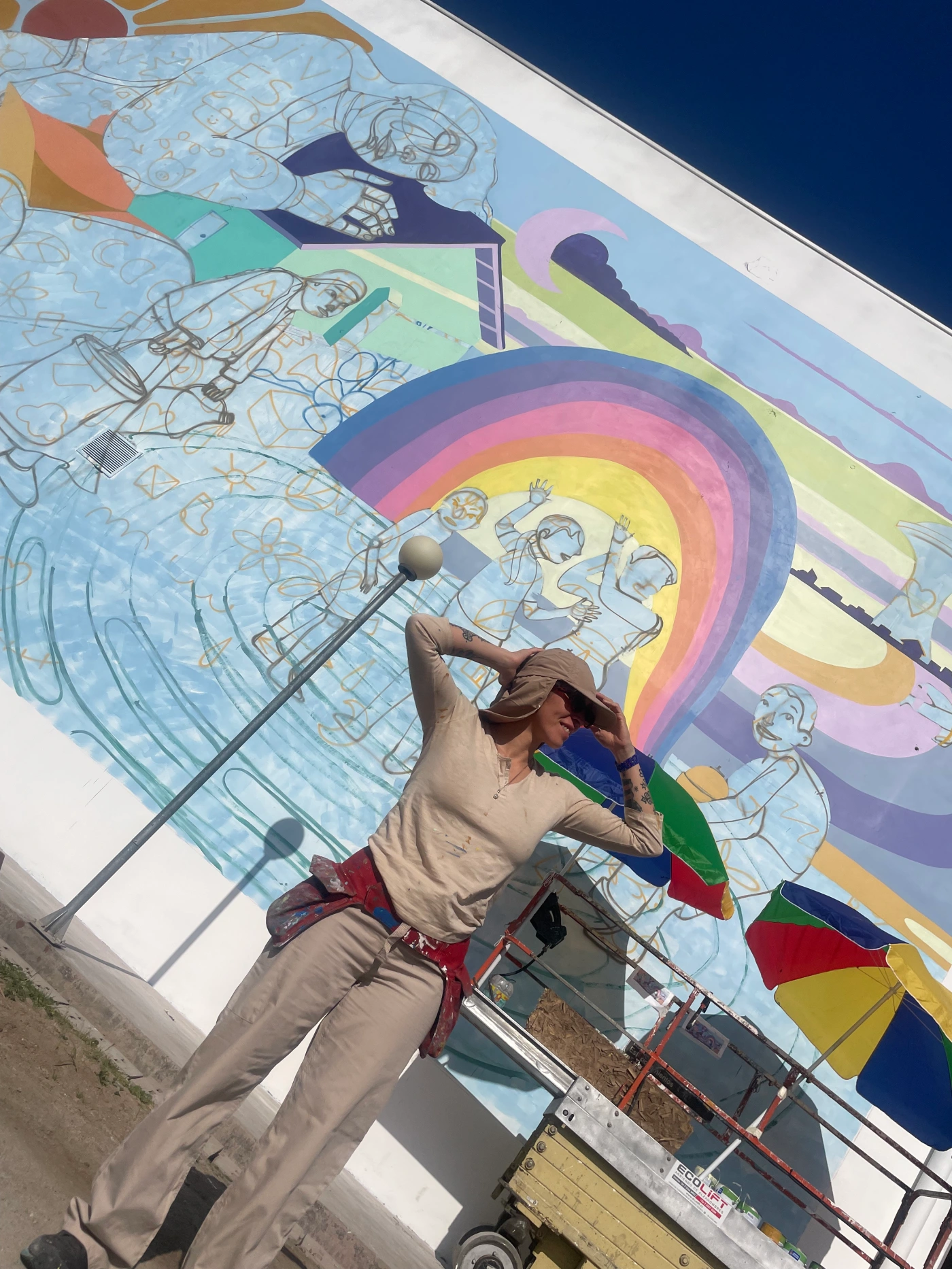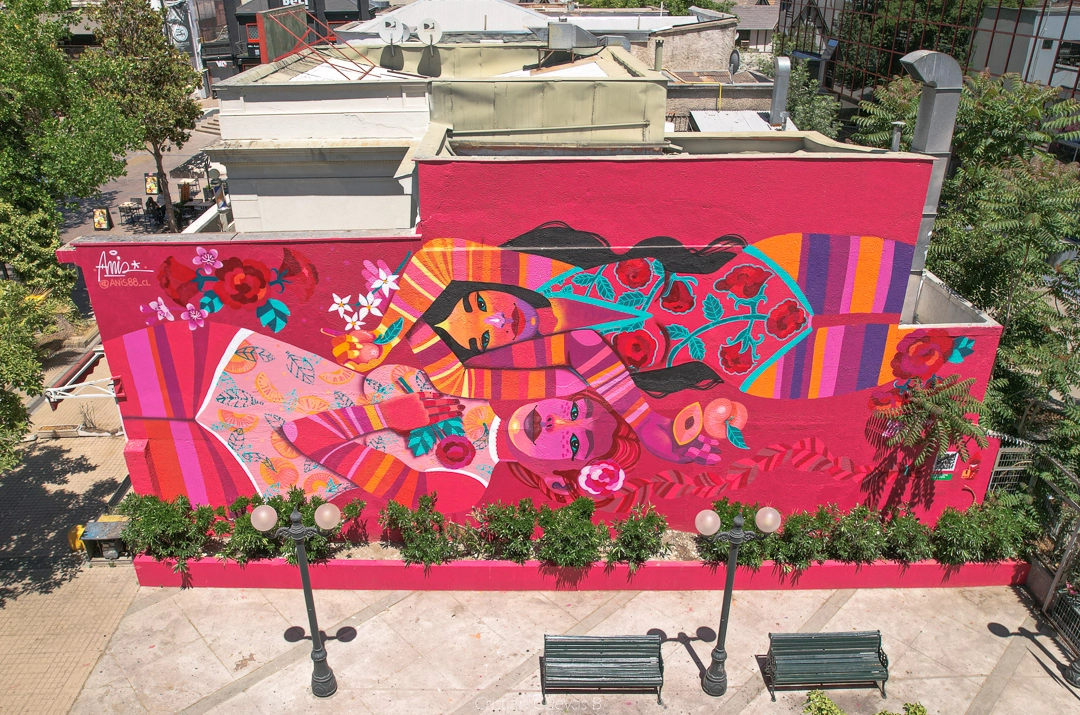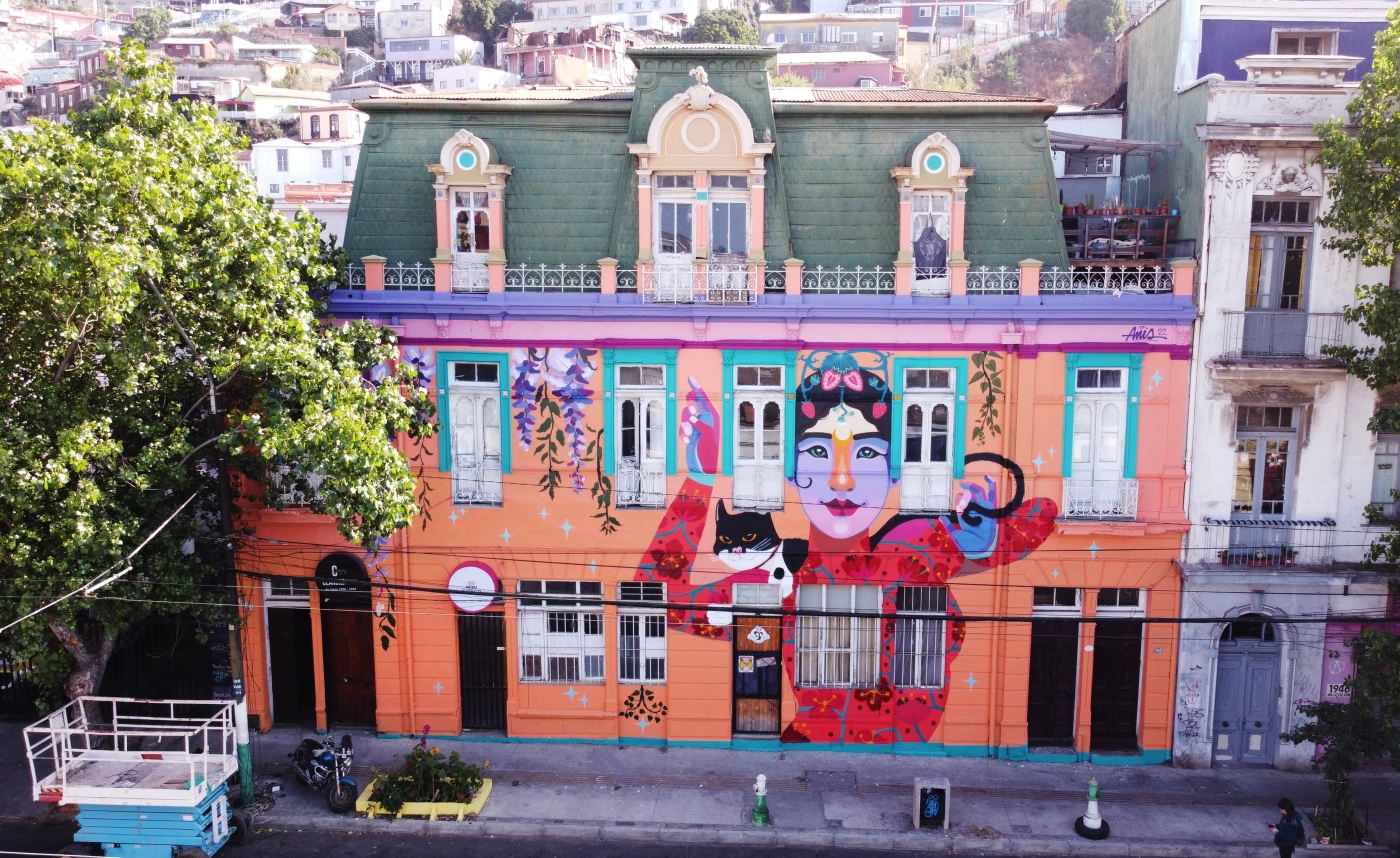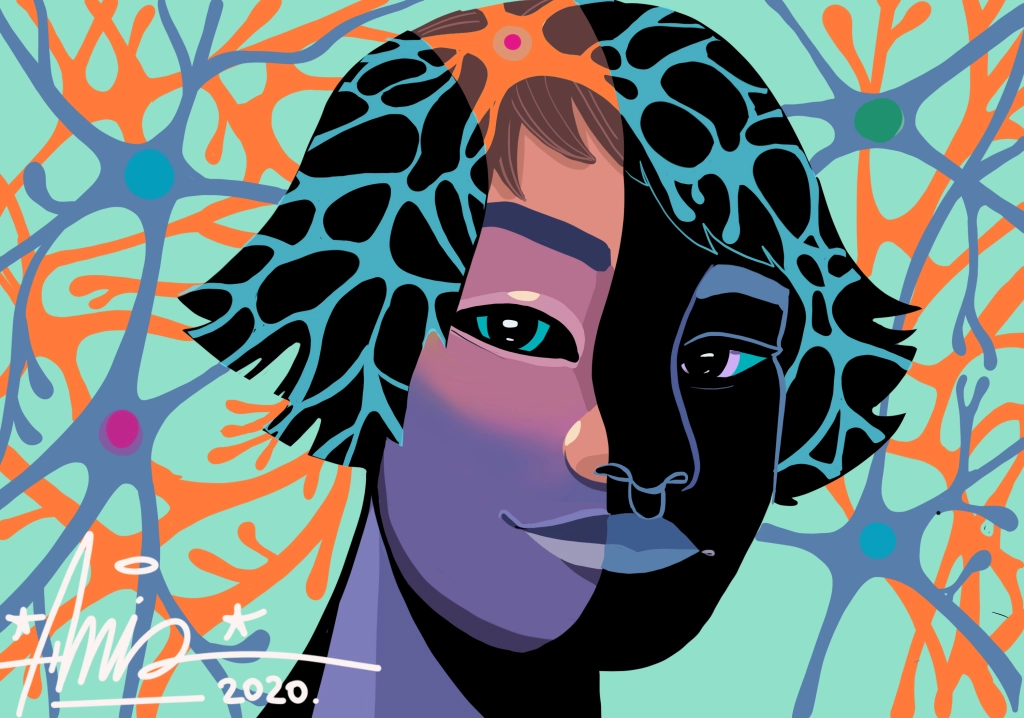With a Journey that Began in the Streets of Santiago: Jocelyn Anís Aracena's Art Crosses Borders
- Maria Jose Andrade
- Oct 28, 2024
- 7 min read
Updated: Oct 31, 2024

With a story that began in the streets of Santiago and over two decades of exploration, Jocelyn Anís Aracena has transformed her art into a universal language that crosses borders. Her approach, blending illustration, muralism, and a genuine connection to urban art, now resonates in Australia, where she seeks to inspire others and forge new networks. In this interview, Jocelyn shares how her passion for art led her to explore new territories and her mission to make each piece an invitation for reflection and connection. She also gives us a sneak peek at what we can expect to see in the Chile Sentido exhibition, an opportunity for the Chilean-Australian community to come together through art.
THE INTERVIEW
Tell us about yourself, your story, and how you entered the art world.
I started in the art world over 20 years ago. It wasn’t precisely the “art world” per se, but more so the urban art world, specifically graffiti. When I was 12, I started painting in the streets, inspired by other painters I saw, particularly the Brigada Ramona Parra and graffiti writers in the south side of Santiago, where I was born. This brought me closer to art, although for me, it was always about drawing. Later, you start labelling it and understanding that it belongs to the art world. That was how I began.
It's fascinating how graffiti was her gateway into art! It’s amazing how urban expression influences the early steps of so many artists. Starting so young definitely gave her a unique and bold perspective.
What brought you to Australia, and how have you experienced your art from here?
What brought me to Australia was a desire for a different opportunity, to live and step out of my comfort zone, and also to view art from a different perspective, learn another language, and keep growing as a person and as an artist. That really motivated me to come to Australia. It was also a place I hadn’t visited before, so that was important in making the decision to come here.
How would you describe your style or artistic approach?
Well, I studied illustration, so I think my style is very much form and figure-oriented, quite figurative. However, I try to step away from being too literal, like with an illustration that’s very closed in meaning, towards something broader like art. I think my work sits right in the middle of those two disciplines, and I like it there.
That mix between illustration and interpretive freedom sounds fascinating. There’s something special about pieces that allow us to find personal meanings and resonances.
How would you define the purpose of your work?
As for the purpose of my work, I think the most important thing for me is to inspire others, to inspire reflection and make people feel they can also engage in art, to encourage them to think about the questions of being. This is where my work aims to be. I also work a lot with metaphors and keep them present in my art.
Creating art that inspires and encourages reflection has an impact that goes far beyond aesthetics. How wonderful to know Anis’ pieces open a space for dialogue and contemplation for those who view them.
Have you been influenced by other artists or artistic movements?
Of course, I’ve been influenced by many artists – I have an endless list of people whose work I admire and who inspire me, from painters and sculptors to musicians, especially. I think a lot of my work is influenced by music because, in my opinion, music is the pinnacle of the arts. So yes, lots of people. In terms of artistic influences, some of the more traditional movements that have always drawn me are surrealism, art nouveau, and expressionism, which I find very interesting. I also love kinetic art, even though I don’t apply it much in my work.
Tell us about your recent projects.
In my recent projects, I’m exploring a new medium – I’m trying to bring my work into wood, a material that feels very interesting and also gives me this idea of embodying, like having a tangible object. So I’m working on wood and getting a bit more into machinery, like jigsaws and drills, for this new piece. Ideally, I’d like to take it towards installation.
Is there a particular piece you’ve created that has impacted you more than others?
One of the most important pieces I’ve created, which marked my path in a way, was a piece I did about seven years ago called Renacer (Rebirth). It’s a mural I did in Valparaiso about a woman surrounded by birds, with a phoenix rising from her chest. It symbolises the idea of moving towards a new life and also spirituality as an essential pillar, something I wanted to start cultivating that year and which has stayed with me since.

That image of rebirth is powerful. A mural reflecting her personal evolution and growth must truly resonate with many.
What pieces will you be presenting at this exhibition, and what inspired them?
The piece I’ll be presenting for the exhibition is an acrylic on wood. It’s inspired by the idea of friendship and draws from Valparaiso’s wild plants, like suspiros and capuchinas. I love thinking of friendship as a flower, of my friends as wild flowers that grow intertwined, always present and supportive, brightening up everyday moments along the streets and city. When I think of Chile, as I’ve only been away a year, I feel what I miss most are my friends. I have a deep appreciation for friendship, and the idea of them being part of this woman, nurturing her while she yearns for her friends.
What are your expectations for this exhibition?
My main expectation for the exhibition is to network, meet other Chileans here, and hopefully connect with people on the same wavelength. That’s my biggest expectation to cross paths with the right people at this exhibition. People with positive vibes, keeping it simple.
Looking back on your career, what has been one of the most significant moments for you as an artist?
One of the most important things that marked me as an artist was the idea of collectives. In 2016, I started a movement with some friends called Muchachitas Pintoras, which aimed to highlight the work of fellow female artists in Chile’s national urban scene. We held several exhibitions in different galleries and even organised a festival with about 15 women artists. It was all about placing women’s work where it belongs and dignifying our craft. This was aligned with feminism and the political push for our rights and our place as human beings. I think that marked me because of the unique energy that is created collectively. When we held workshops or painted murals that stretched over 600 square meters, it was incredible to invite people to experience that. I became almost like a director, guiding others to create the piece rather than painting it myself. The commitment and care people showed were amazing, and the final result had everyone’s energy imprinted on it. That was just incredible.

The idea of a collective to support the work of women artists is powerful. Collaborative art has a profound impact, and it’s clear her commitment goes well beyond individual creation.
Have you noticed any significant differences in the art scene here compared to your home country?
The differences I see between Chile and Australia are mainly around appreciation. There’s a higher appreciation for art here, and it’s better paid. I also feel that Australia’s art scene is more diverse. Chile’s scene is more self-managed, which is interesting but can be exhausting. Also, in Australia, there’s more openness towards abstract art, whereas Chile is still very much tied to figurative art, limiting artists in terms of showing work that people are willing to understand and embrace.
What are your upcoming projects or goals in your artistic career?
My next projects have a lot to do with murals, which is the area I’ve developed the most in my career, but I’m very keen on moving towards installations. It’s similar to murals in that it’s art you can’t just take home, so I really like the idea of creating experiences for people rather than just making something they’ll buy and leave with. I dream of doing large installations in the city, and I’m walking towards that, experimenting and understanding how to step into that world. That’s my biggest goal as a visual artist.
What does participating in this exhibition mean to you?
Participating in the Chile Sentido exhibition is a big deal because I’ve only been in Australia for a short time, and it’s a fantastic opportunity to get to know the creative community and exchange experiences. Some people here have been around longer and have a clearer sense of what it means to be an artist in Australia. I’m also excited about the diversity of artists chosen for the exhibition. It motivates me to do my best and strive for more with my work. I’d also like to contribute to this collective space with what I know, so I’m very open to whatever this Chilean-Australian community experience may bring.
What message would you like to leave for those attending the gallery?
I hope people visit Chile Sentido with an open heart because everyone participating is giving their all to show their best energy through their work. May they enjoy it fully and keep us in mind for future projects.
To continue connecting with Jocelyn Anís Aracena's work, you can find her on Instagram at @anispintora, or contact her directly via email at anis88.arte@gmail.com. You can also explore more of her art and future projects on her Linktree page.
The Chile Sentido exhibition promises to be a unique experience, bursting with creativity and culture, where Chilean talent expresses itself in vibrant and diverse ways. Jocelyn Anís Aracena and other Chilean artists living in Australia have poured not only their art but also their identity and experiences into their works. Don’t miss the chance to connect with these stories and be inspired by their perspectives! Come and immerse yourself in the world of Chile Sentido and in Anís’ work, as she invites us to see friendship, nature, and life itself through her unique artistic lens.









Comments